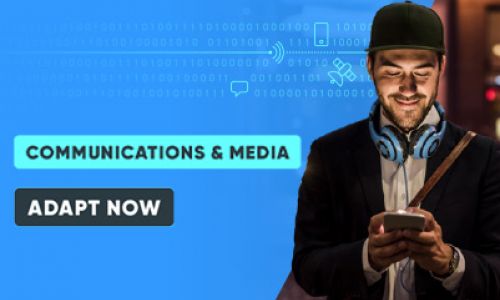As we see the pace of disruption and transformation accelerating across all industries, it should come as no surprise that digital interactions and social media would have shifted as well. These are some of the most significant trends and shifts we’re seeing as 2019 rolls along.
1. Artificial Intelligence: AI is going to take over the world (or at least the world’s simpler jobs)!
It should come as no surprise that AI is near the top of the list for trends that impacting social media in 2019. As we see the rise of intelligent scheduling tools, content recommendation engines, I can see a world shortly where AI could even begin to automate your social media strategy. Key areas where we see AI impact social media are in content creation, customer service/social care, customer intelligence through unstructured data analysis, content optimization, and competitive intelligence. Additionally, a recent article about the real conversations at Davos by the New York Times exposed the real focus of many top executives in the realm of AI. Businesses are aggressively looking AI to reduce cost and automate the simple jobs. Social media management could very well be one of those, at least from a scheduling and content recommendation perspective.
2. The Rise of Chatbots:
Given the major flop that many brands experienced with the early rollout of chatbots, you may not expect these little bots to stay on the watch list. However, we are now seeing more advanced technologies and easier-to-work-with tools for that make creating customer journeys easier. Add on top of that the fact that 69 percent of consumers do not care if their answer comes from a bot or a human as long as they get an accurate answer fast; we see an openness to engage again.
With over 1.4 billion people interacting with a bot in some way every day, we see a huge increase in adoption in the banking, insurance, and healthcare markets for bots. In addition to consumer-focused bots, one of the most exciting applications of this technology is in the B2B space with tools like Drift and Intercom that are enabling companies to engage in more targeted and effective ways than a traditional website or web form has offered in the past. The tools connect directly with decision makers in market, and apply account intelligence to identify web visitors who are likely to be interested in your products.
3. Spot the Algorithm
The application of algorithms and data science is almost expected across the board, thanks to companies like Netflix and Amazon, which have trained consumers to expect an entirely data-driven, personalized experience led by advanced mathematics (see that calculus you thought was a waste of time in school does have relevance!). Algorithms are being used to create personalized, timely, and relevant experiences. We see them in recommendation engines, journey orchestration software, and advanced communication engines like Adobe’s Sensei solution that promises to deliver email messages at just the right time. Consumer in 2019 expect brands to leverage data to deliver a valuable and personalized experience. Those that fail to do so will be seen as old and out of touch.
4. The Growth of Video
Video has become much easier for marketers to create and leverage in their marketing efforts. With a generation that thinks in snaps and Instagram stories and the release of apps like Clips and Directr designed to simplify the video filmmaking and production process, it is obvious that this trend will continue to expand.
This is for a good reason—65 percent of executives who view a company video visit the company’s website, 39 percent call a vendor after viewing a video, and 52 percent of consumers are more confident after viewing a company video or product video.
Additionally, brands get an uplift in their SEO from video marketing through sites like YouTube and Vimeo. The struggle for brands is finding a balance between cost to produce and value returned for the effort.
5. Influencer Marketing: I want access to your following
When done right, influencer marketing can be incredibly effective for brands, especially in the consumer space. Think of unboxing videos on YouTube, travel photos on Instagram, and even the maligned Fyre Festival. Influencers have an impact on the social popularity and viral nature of these initiatives.
This trend is going to continue to increase, but brands need to ensure alignment between themselves and their influencers’ messages. In this hypersensitive era, one slip-up could lead to a call to boycott the brand due to an influencer’s actions. Showcasing products alongside tourism and travel are going to be some of the fastest growing areas in this category.
6. More than Emojis, Social Messaging Apps
Social messaging apps are seeing wide adoption across the board—1.2 billion WhatsApp users, 1.2 billion on Facebook Messenger, 889 million WeChat users. There are over 2 billion messages sent between businesses and consumers per month on Messenger, because we live in the age of the text message. Behaviorally, many consumers do not want to get on the phone, and they would rather text/chat/message with the brands they are communicating with. It is more convenient and fits into the consumer's preferences. Brands benefit as well, as these channels are cheaper to operate than traditional phone or voice, and creates the opportunity for chatbots and automation. This category is going on a growth trajectory in 2019 as consumers push brands for more connection and communication that fits in their timeline.
7. Now You See Me: Visual Search
Finding a product can now be as simple as taking a picture. Google or other visual search engines will find where you can buy it for the best price. It is also helping consumers see what products will look like in their home through augmented reality like Amazon and IKEA are offering today. Additionally, we can see visual search help with everyday experiences like saving a business card, getting reviews on a book, getting details about a landmark or building while traveling, etc. Visual search makes everything searchable for consumers and quickly brings up relevant information without having to describe that white polka dotted pillow you think would look good in your apartment.
8. Speak to Me: Smart Speakers
This category has been the fastest adopted consumer technology in the history of the world, dominated by Alexa and Google Home. Analysts are forecasting that 50 percent of searches will be voice by 2020, which is a huge deal for brands. Remember when you could buy that pay-per-click ad on Google, pay to be number one, and your SEO focus was to get on page one? That is all going to change with smart speakers where consumers want the answer, and they trust the speaker to remove the hard work of decision making for the majority of product decisions by picking the best default option.
Imagine that you tell Alexa to buy peanut butter. Alexa knows you like the chunky kind and wants it to be organic, but you don’t care beyond that, so Amazon ships you the default option with the best reviews aligned to those two criteria. How will brands become the default option for these voice assistants? What is the future of digital advertising with the rise of this engagement channel?
Voice search has the promise to be one of the most disruptive trends and technologies in 2019 and beyond, given the implications on things we have come to take as ubiquitous and standard, like Google, as the way people get their information.
These are trends that I’m watching in 2019 in the digital experience space, in addition to keeping an eye on the technology horizon for 5G, wireless power, and IoT. Those may have to wait until 2020.
What are you watching?







